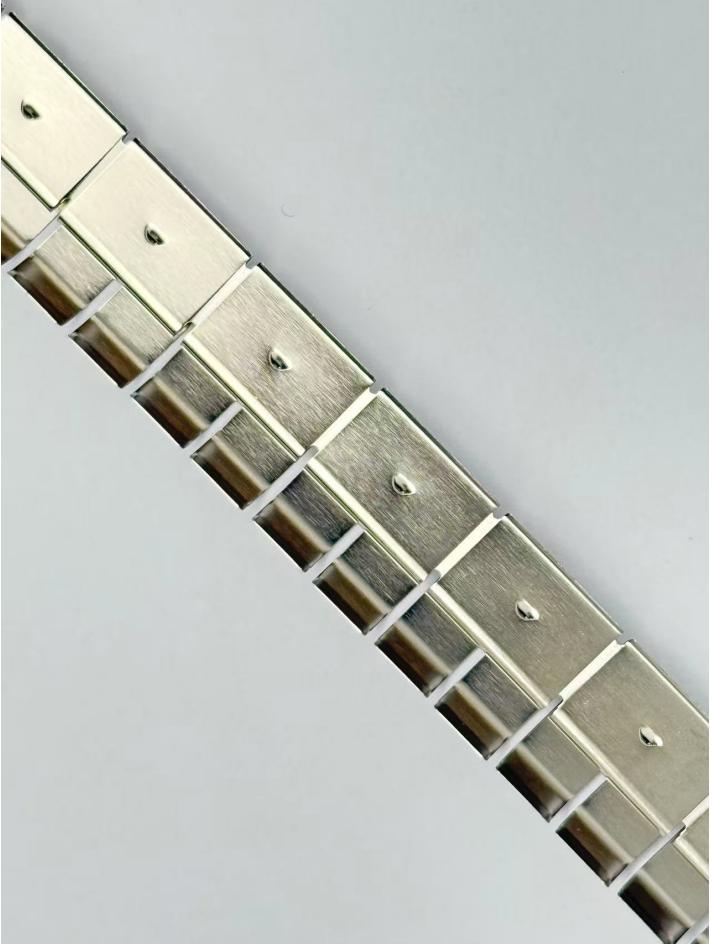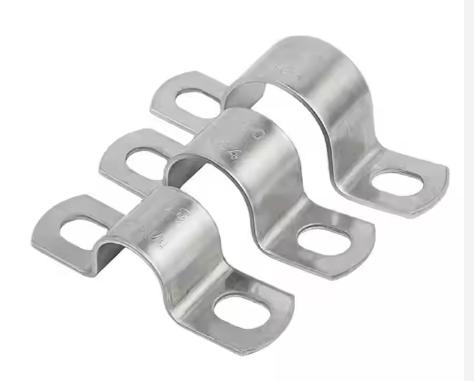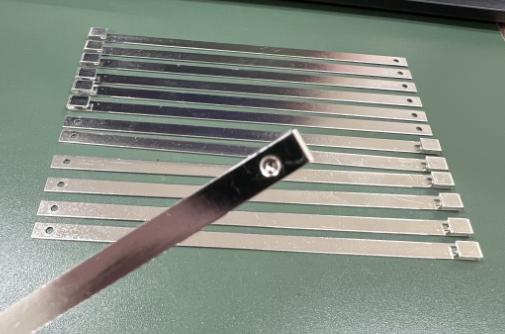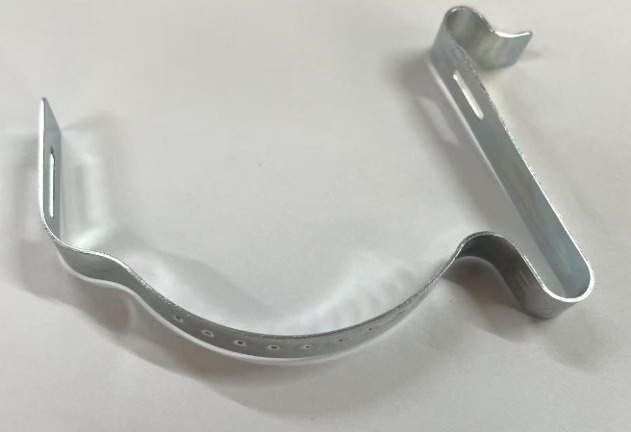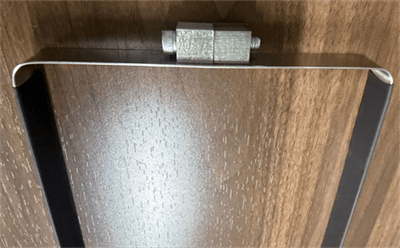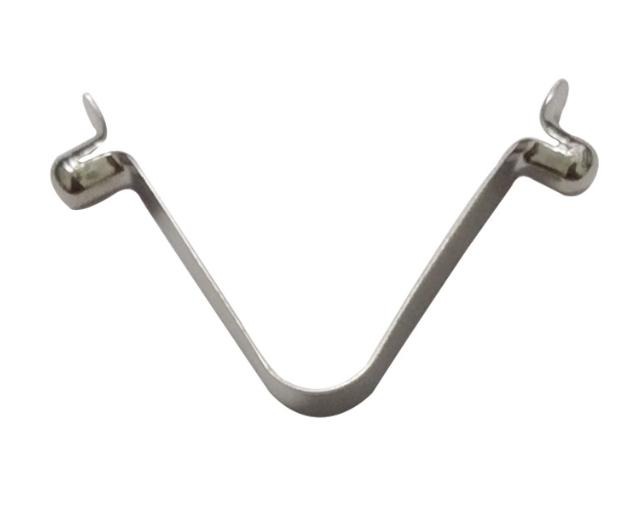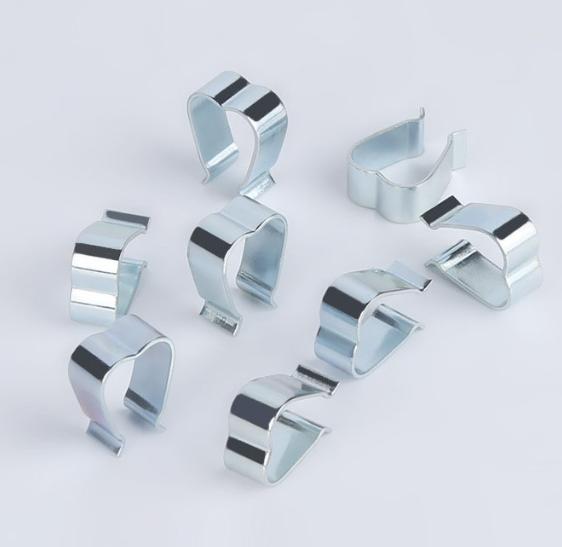The Use of Stamping Parts in Electric Vehicle (EV) Manufacturing
The shift towards electrification in the automotive industry has resulted in an increase in precision component parts within electric vehicles. Each component has a specific purpose and intricate designs that require advanced engineering. Electric vehicles require a specific batch of stamping parts that are advanced and meticulously designed. Metal stamping has to be precise to meet the criteria of each part. Out of the techniques and processes that are utilized in the industry, metal stamping works the best to meet the precise bulk demand of electric vehicles.

Table of Contents
The Role of Stamping Parts in EV Manufacturing
The crucial components of the battery, motors, power electronics and even the structure of the vehicle depend primarily upon the advanced metal stamping process. Within the industry, electric vehicle parts are known to be immensely performant and intricate. Stamping processes work to meet the demand in minimal time. Stamping is not only able to meet the demand, but is able to offer versatility within the materials used. It has become commonplace to balance the performance of electric vehicles and balance the environmental impact too.

Key Applications of Stamping Parts in EVs
1. Battery Systems
Perhaps the most crucial application of stamping is in EV battery systems. Stamped battery enclosures and busbars serve to house and interconnect the lithium-ion cells. The enclosures add structural protection and integration of lightweight materials to improve vehicle efficiency.
Meanwhile, busbars secure proper electrical interconnections and optimized power distribution in the battery packs. Stamping operations maintain geometrical and dimensional tolerances critical to the alignment and systematic reliability of the battery system.
2. Motor Assemblies
Parts of the stators and rotors of electric motors largely depend on stamped components. With stamping, electric motors can achieve optimal geometrical and dimensional tolerances needed in high-performing EVs. Precise stamping enhances the energy efficiency and reliability of the motor throughout the vehicle’s life span.
Smooth operations of the motors are the results of the minimal energy losses which are crucial in driving range enhancements. With proper motor systems in EVs, driving efficiency is greatly improved.
3. Structural Components
EV structural components such as brackets, reinforcements, and mounting plates often rely on stamped parts. These components provide rigidity and support for the vehicle frame, enhancing crashworthiness and overall safety.
Stamping enables the creation of complex shapes that reinforce key areas of the chassis while maintaining a lightweight design. This balance of strength and weight is critical for optimizing both safety and vehicle efficiency.
4. Thermal Management Systems
The efficiency of an electric vehicle is strongly correlated to its ability to manage heat, which is where certain stamped components are vital to the production of heat sinks and cooling plates. These parts help batteries and power electronics contained within the vehicle maintain a safe operating temperature.
Components that are designed and manufactured using precision stamping are crucial to the thermal management system of the vehicle as they help maintain the system’s operating temperature to a level that will not threaten the lifespan of the batteries, and the performance of the electric motor.
5. Power Electronics
Electric vehicles consists of power electronics such as inverters and batteries, which also contain stamped components. These components include connector plates, shielding parts, and mounting parts. They are designed to ensure proper assembly, while also providing electrical isolation and protection of the system.
Stamping as a means of production ensures that the parts will operate in harmony with each other as they all possess the electric as well as mechanical specifications that are vital for the safe and efficient function of a high-voltage system.
6. Chassis and Body
The stamping process contributes to the internal systems of the vehicle and its overall structure of the vehicle. The vehicle internal systems and structure is supported and reinforced through stamping of mounting brackets, support frames, and body reinforcements which also helps in proper alignment, subsystem attachment, and assembly structural integrity. This aids in proper alignment and subsystem attachment, which helps vehicle structural integrity, assembly and maintenance, and also supports vehicle safety.
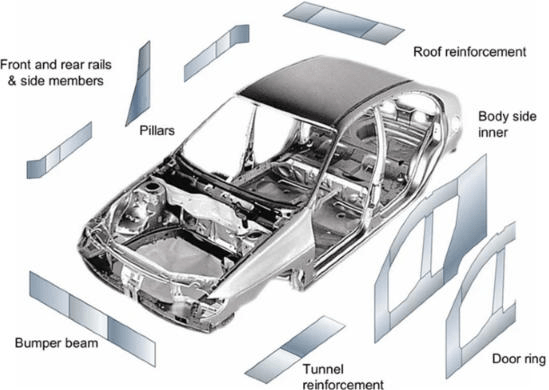
Key Technologies Enabling Stamping Parts in EV Manufacturing
The effectiveness of stamping parts in EV production is closely tied to the advanced technologies that enable precision, efficiency, and scalability.
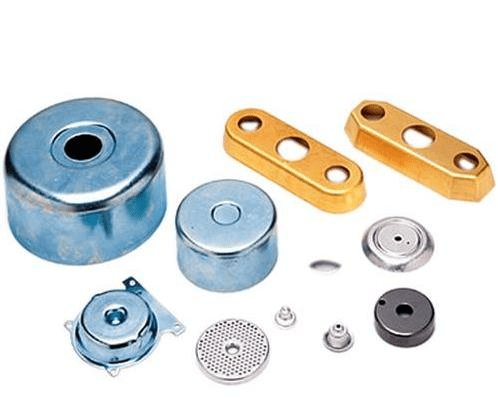
1. High-Tonnage Presses for Advanced Materials
The components of EVs are made from advanced steels and aluminum which are high strength and lightweight materials, and are optimally used for vehicle performance and safety EV components. These materials are shaped with accuracy and precision using High-tonage presses due to the force which these presses deliver.
These presses are also necessary for durable and dimensionally precise parts as high-tonage presses are critical in EV systems pareto. The quality of the parts is also maintained which is a necessary condition for stamping in EVs.
2. Automation and Robotics Integration
The incorporation of automation with robotics have improved the speed, quality and safety of stamping operations. Robotic systems with little human assistance can perform material feeding, part transferring and assembly operations to the optimal level. Inversely, this helps ramp up factory EV output and lowers errors.
In EVs, automation heavily relied upon in the production of EVs to ensure the highest quality. Robotics also improve efficiency by specializing in the merging of stamping and the assembly lines adjacent to it.
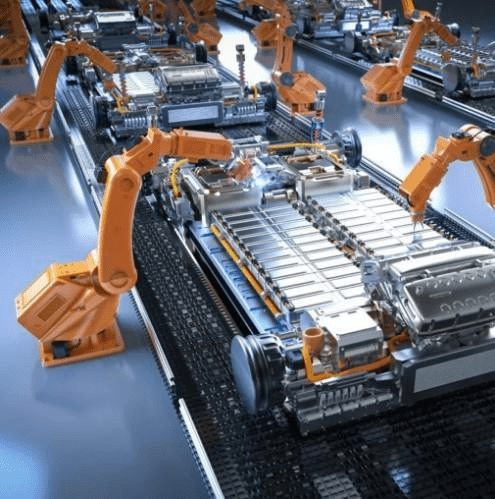
3. Advanced Tooling and Die Design
The backbone of precision stamping lies with the development of specialized stamping dies and tooling. Die tooling with advanced capabilities can perform actions like fast production of intricate shapes with tight tolerance, minimal material and less time.
Stress factors, material flow, and other software simulations are factored into modern tooling dies for optimization so defects are avoided. In EVs where intricate and complex parts are common, apparatus grade tooling is fundamental to the performance and manufacturability selected.
4. Precision Measurement and Quality Control
The importance of precision in the performance and safety of the electronic vehicle hinges on the importance of the precision in the metal stamped parts in the advanced measurement disposition, in real time, of the cross sections modules, laser scanners, and inline inspection system they monitor during the measuring systems and along the smart inspection network in the production line.
This is maintained for battery housings, motor laminations, and Strut Brackets. Continuous monitoring ensures compliance with automotive industry standards, and it reduces waste while improving reliability.

5. Material Innovation and Surface Treatments
The choice of materials and surface treatments plays a vital role in the performance and longevity of stamped EV parts. Advanced coatings, such as anti-corrosion layers and lubricative finishes, improve durability and facilitate smooth stamping operations.
Material innovations, including high-strength aluminum and copper alloys, allow manufacturers to balance weight, conductivity, and mechanical performance, which is particularly important for battery and motor components.

Challenges in Stamping Parts for Electric Vehicle Manufacturing
| Challenge | Description | Impact on EV Manufacturing |
| High Tooling Costs | Initial investment in dies and presses can be substantial. | Increases upfront production costs, requiring long-term volume to offset. |
| Material Selection | EV components require high-strength, lightweight, or specialized alloys. | Incorrect material choice can affect durability, weight, and performance. |
| Dimensional Precision | Tight tolerances are necessary for battery packs, motors, and structural components. | Inaccurate stamping can lead to assembly issues and reduced reliability. |
| Complex Geometries | Stamped parts often feature intricate shapes and thin sections. | Difficult to manufacture consistently, increasing risk of defects. |
| Process Optimization | Stamping parameters must be carefully controlled for each part and material. | Poor optimization can lead to scrap, increased cycle time, and waste. |
| Material Springback | High-strength metals tend to return partially to original shape after stamping. | Requires compensation in die design to maintain part accuracy. |
| Surface Quality and Coatings | Some EV parts require corrosion resistance or specialized surface treatments. | Poor surface finish can compromise electrical conductivity or longevity. |
| Integration with Automation | Robotic handling and in-line inspection must align with stamping processes. | Misalignment can reduce efficiency and affect part consistency. |
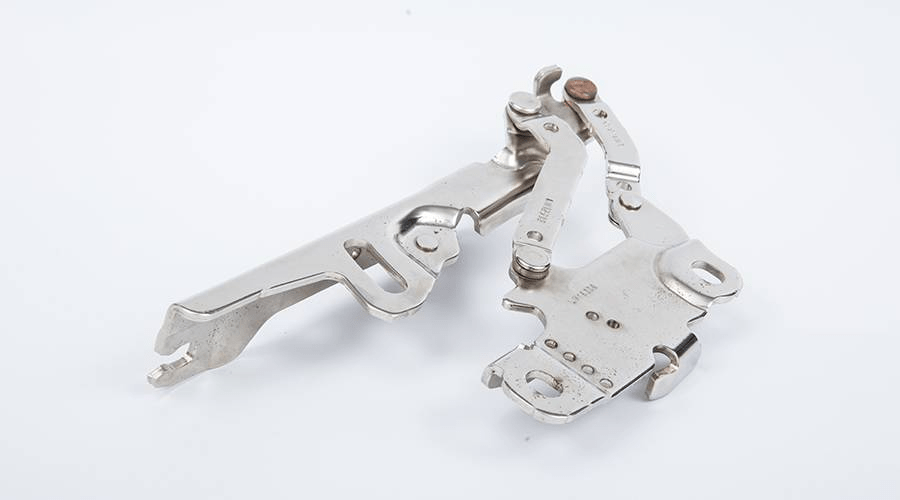
Future Outlook of Stamping Parts for EV Manufacturing
Advancements in Material Technology
In the upcoming years, the stamping processes involved in the production of components for electric vehicles will make use of sophisticated materials, which may include ultra-high-strength steels, lightweight aluminum alloys and other copper-based composites. Such advanced stamping materials need to encompass adequate strength while simultaneously maintaining a lightweight ratio, and allowing the crucial components, such as the battery enclosures and the bus bars, to conduct electricity.
As the fields of material science develops, bars, and other crucial components such as enclosures will utilize the latest stamping technologies which analyze the height and the depth without losing the efficiency, or the precision, of the work.
Focus on Sustainability and Lightweight
While the electric vehicle industry continues enhancing the energy efficiency of the vehicles while also mitigating the environmental impact of the vehicle, it is predicted that stamping technologies will assist in the lightweight of the vehicle.
Modern day, high-precision stamping technologies will make it possible to manufacture components that consist of thinner cross sections, as well as other complex features while retaining material and energy. Furthermore, in modern EV manufacturing, other practices such as the incorporation of energy-efficient stamping presses and the use of secondary recycled metals is standard.
Digital Twin and Simulation Technologies
The application of advanced simulation and digital twin technologies will continue to transform stamping processes. In the first place, the virtual models that manufacturers use, which illustrate material behavior, die performance and workflow, enable the manufacturers to recognize potential problems and resolve them by setting appropriate parameters and rhythms to various processes, thus accelerating the design validation procedures.
Such predictive capabilities also ensure the components meet the required standards for EV while also lessening the overall cost of prototyping, thus reducing the time to market and enhancing profitability.
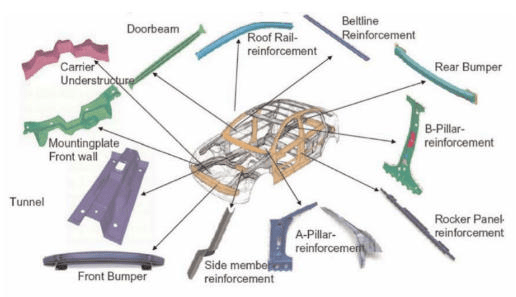
Final Thoughts
High-precision stamping technology is now critical in electric vehicle component manufacturing. It enables the fabrication of light, tough, and highly engineered parts. Remarkable changes in the automobile industry driven by electric vehicles will surely benefit from the advancements in stamping technology and incorporate it for better performance, safety, and efficiency in EV production.

